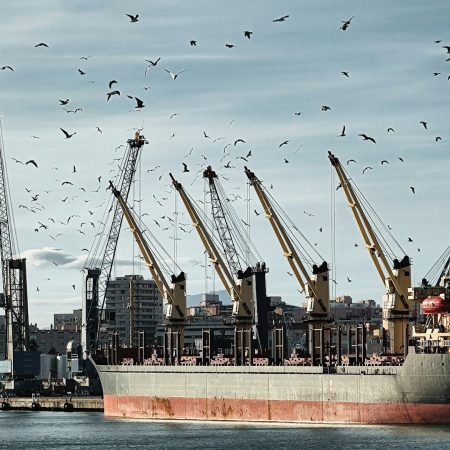Trade surveillance is often viewed purely as a compliance exercise, a defensive measure to avoid regulatory penalties. A recent BroadPeak webinar revealed how surveillance can deliver much greater value when compliance teams are integrated into business strategy.
The speakers – Kendra Fergusson (Manager, Asset Management at TC Energy), Michael Berry (Managing Member at MRB Compliance Consulting and former Director of Compliance at PetroChina), and Vivek Pathak (Co-Founder and COO of BroadPeak) – explored how surveillance programs can uncover blind spots, inform business decisions, and drive better outcomes across the organization.
Compliance under pressure
Energy and commodities trading is changing faster than at any time in recent memory. Liquidity has shifted across exchanges while OTC markets remain critical. At the same time, new products such as LNG, carbon, and voluntary offsets are maturing quickly. Regulators have also become more assertive. From the CFTC in the United States to ESMA and ACER in Europe, expectations around recordkeeping, transaction reporting, and surveillance have risen sharply. It is no longer enough to capture trades. Firms must also prove they have looked for suspicious behavior, acted on alerts, and documented their decisions.
This creates pressure for compliance teams. They must avoid fines and reputational damage through strong surveillance. They must also support business growth by guiding market entry, product launches, and trading strategies. Surveillance is not just defensive anymore. It shapes how the business operates.
Compliance as a strategic partner
Compliance sets the boundaries for trading activity. Rules and limits are not there to restrict commercial opportunity. They give it shape. Kendra explained that compliance defines the “sandbox” in which trading and operations must occur. Knowing the rules and boundaries allows firms to optimize and manage risk effectively. Without that clarity, they may act too cautiously or step into prohibited areas without knowing.
Michael added that compliance cannot be seen as only a legal function. Law and regulation set the boundaries, but effective programs require knowledge of workflows, data, and cross-functional responsibilities. Vivek commented that understanding the commercial objectives behind trades is critical, not just the legal framework. This requires knowledge of how trades execute, how data flows through systems, and how markets operate. Programs built only from legal language miss important context. When compliance has that knowledge, it becomes a trusted partner in business decisions.
More than box-ticking
Surveillance is often seen only as a compliance tool. The discussion showed it has wider value and not just a box-ticking exercise. Kendra pointed out that surveillance can reveal patterns of trader behavior that are not breaches, but matter. Repeated execution strategies may signal complacency. Transactions that track the market closely may add little commercial value. Efficiency problems in execution can create unnecessary risk.
This makes surveillance useful for trading, risk, and strategy teams. It provides feedback on how the business operates and where performance can improve. Surveillance protects against regulators. It can also guide how firms pursue opportunities.
Linking physical and financial trades
Surveillance frameworks still have major gaps, especially when it comes to physical and cross-market activity. Physical trades are harder to capture in real time, and links between benchmarks such as Brent and WTI, or between physical and financial products, often go unmonitored. Emerging markets like carbon and LNG add further complexity, yet many programs do not fully cover them. These blind spots create risks that may not be visible until regulators intervene.
Michael noted that regulators have already made it clear that physical trading falls within their scope when it affects derivatives. The CFTC has pursued cases where activity in the physical market distorted financial benchmarks, while in Europe, REMIT and MAR extend obligations into wholesale energy markets. Vivek added that firms often underestimate risk in new or illiquid markets, which makes early surveillance coverage essential. The message was clear: physical and financial trades cannot be treated as separate silos. Market linkages must be built into surveillance programs from the start.
At the same time, surveillance must match the complexity of the market. Not all commodities trade in the same way. Electricity, for instance, settles in fifteen-minute intervals with constant flows of messages and adjustments, requiring a different monitoring approach than crude oil or metals. Kendra stressed that programs must be proportionate to the complexity of the market in question.
Firms cannot monitor everything, but they can prioritize their biggest risks, design coverage that fits their trading activity, and document the gaps they know will remain.
Compliance as a business partner
Surveillance should not be a standalone activity, it works best when compliance is part of business decisions. As Kendra noted, compliance can often see signs of trader behavior – such as efficiency, execution patterns, or even complacency – that go beyond simple rule-based checks. Her point highlighted how compliance has insights that can inform business processes as much as regulatory obligations.
Michael added that waiting until problems emerge, such as breaches of position limits, only increases the pressure on both compliance and trading teams. In his view, proactive involvement from compliance reduces this strain and strengthens control frameworks.
For Vivek, the value of compliance lies in being a partner to the business rather than an afterthought. He explained that sometimes activity may not look suspicious on the surface, but viewed against commercial context, it can raise important questions. His comments reinforced the need for compliance to play an early role when new products launch or when firms enter new markets.
Together, the speakers framed compliance as an enabler: support that should be designed into business processes from the start, not an obstacle added at the end.
What you do not see can hurt
Trade surveillance in energy and commodities is more than a compliance exercise. It helps energy and commodity trading firms understand how markets behave, how traders operate, and how to manage risk. The biggest gaps remain in physical trades, cross-market links, and emerging products.
Closing those gaps requires strong data foundations, proportionate frameworks, and human oversight. What you do not see can create the greatest risks. Surveillance must evolve to capture those blind spots. When compliance becomes a business partner rather than just a control function, firms are better positioned to deal with regulatory pressure, enter new markets, and optimize trading performance.







